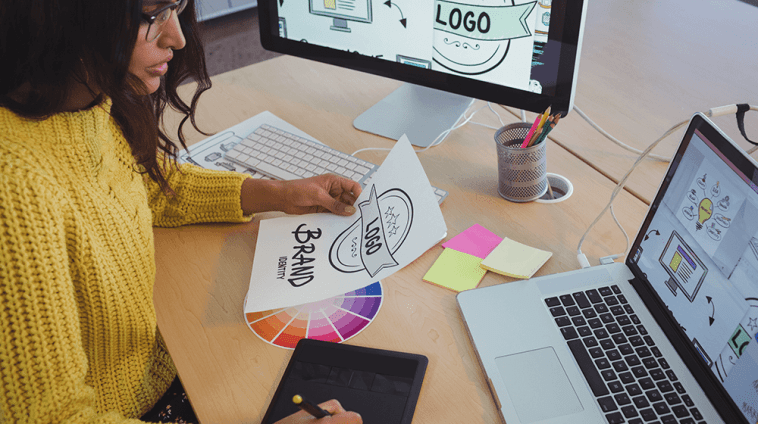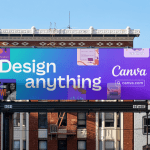Introduction.
Graphic design is everywhere. From the ads you see on your phone to the posters in your favourite coffee shop, design shapes how we experience the world around us. It’s all about communicating ideas, grabbing attention, and telling stories visually.
But what if you’ve always wanted to dive into the world of design but aren’t sure where to start? The good news is, you don’t have to be a professional to make eye-catching designs anymore.
Canva has made graphic design super accessible to everyone, even those without formal training. It’s a user-friendly platform that allows you to create stunning designs with just a few clicks. The best part? You don’t need a fancy degree or expensive software to get started.
Canva offers a variety of templates, tools, and resources that make it easy for beginners to create amazing visuals for social media, presentations, posters, invitations, and so much more.
This article is for anyone curious about how to learn graphic design using Canva. If you’ve been wanting to improve your design skills, but the idea of mastering complex programs seems intimidating, Canva is here to help.
Why Should You Learn Graphic Design?
First, let’s talk about why learning graphic design is a valuable skill. You don’t have to be a professional designer to appreciate the importance of visuals in today’s world.
Studies show that people are more likely to remember information presented in a visual format, which is why businesses, content creators, and marketers focus heavily on design.
Graphic design helps you grab attention, tell stories, and make sure your message is clear and memorable.
With the rise of social media and online marketing, creating visually appealing content is now a must for anyone who wants to stand out.
Whether you’re running a business, creating personal content, or just trying to make your social media posts pop, learning how to design on Canva can give you an edge. It’s also a great way to unleash your creativity and develop new skills that you can use in all kinds of projects.
How Do I Get Started With Canva?
Now, let’s dive into how to learn graphic design on Canva. The great thing about Canva is that it’s not just for professionals.
It’s designed for people who are new to design but want to make an impact with their visuals. So, if you’re starting from scratch, here’s how you can begin:
- Create an Account The first step is simple—sign up for a free account on Canva. You can use your email address or sign up with your Google or Facebook account. Once you’re in, you’ll be taken to the Canva dashboard where you can start creating designs right away.
- Explore Templates Canva offers a huge library of templates for different types of projects: social media posts, presentations, flyers, business cards, resumes, and more. These templates are pre-designed, so you don’t have to worry about starting from scratch. All you need to do is pick a template that suits your project and start editing.
- Learn the Basics of Design While Canva is easy to use, it’s still good to understand the basics of design principles. Simple things like layout, color theory, typography, and contrast can make a big difference in how your designs turn out. Canva has tons of educational resources, including tutorials and design courses, to help you learn these principles in a way that’s easy to understand.
- Customize Your Design Once you’ve chosen a template, it’s time to make it your own. You can change the text, fonts, colors, and images to fit your style. Canva gives you access to a huge library of stock photos, illustrations, and icons that you can use to enhance your design. You can also upload your own images if you prefer.
- Experiment and Practice The more you practice, the better you’ll get at using Canva and creating professional-looking designs. Don’t be afraid to experiment with different styles and elements to see what works. Canva’s drag-and-drop interface makes it easy to try out new things without worrying about making a mistake.
Tips for Learning Graphic Design on Canva
- Start Small If you’re new to graphic design, it’s best to start with simple projects. Try creating a basic social media post or a birthday card. Once you’re comfortable with the tools and layout, you can move on to more complex projects.
- Use Canva’s Tutorials Canva offers a variety of tutorials that cover everything from basic tools to advanced design techniques. These tutorials are a great way to learn the ropes and improve your design skills.
- Don’t Overcrowd Your Designs One of the most common mistakes beginners make is overloading their designs with too much information. Keep things clean and simple. Focus on the most important message and don’t clutter the design with unnecessary elements.
- Understand Typography Typography plays a big role in graphic design. It’s not just about picking a pretty font—it’s about making sure your text is easy to read and fits with the overall design. Canva has tons of font options, but try to limit yourself to two or three fonts per design for a clean look.
- Play with Color Color can make or break your design. Canva has a color palette tool that lets you choose complementary colors for your project. If you’re unsure about color combinations, try using Canva’s pre-set color schemes to make sure everything looks balanced.
- Learn from Others Follow design influencers, browse Pinterest, and check out other people’s Canva designs to get inspiration. You can learn a lot just by looking at what others are creating and understanding what works well visually.
- Use the Right Tools for the Job Canva has tons of features, but not all of them are necessary for every project. Stick to the basics if you’re just starting out. As you get more experienced, you can explore things like animations, charts, and more advanced features.
Can I Use Canva For Free?
Yes! Canva is free to use, and you get access to a ton of features and templates without paying a penny.
However, if you want access to more premium content, such as exclusive images, fonts, and templates, Canva offers a paid version called Canva Pro.
Canva Pro is a great option for business owners, content creators, or anyone who needs extra resources for their designs.
FAQs
Q: Do I need graphic design experience to use Canva?
A: Nope! Canva is designed for beginners, so you don’t need any prior design experience. The platform is intuitive and easy to use, and there are plenty of resources to help you learn as you go.
Q: Can I create professional-looking designs on Canva?
A: Absolutely! While Canva is beginner-friendly, it has plenty of powerful tools that allow you to create high-quality, professional-looking designs. Many businesses, marketers, and content creators use Canva for their design needs.
Q: Is Canva really free?
A: Yes! Canva is free, and you get access to lots of tools and templates without paying anything. If you want extra features, like premium images or the ability to resize designs for different platforms, you can upgrade to Canva Pro.
Q: How long does it take to learn Canva?
A: It depends on how much time you dedicate to learning, but most people can get comfortable with Canva in just a few hours. If you keep practicing and exploring new features, you’ll be creating great designs in no time!
Q: Can I use Canva for business purposes?
A: Definitely! Canva is widely used for creating business assets like social media posts, brochures, presentations, and more. Canva Pro also offers features tailored to business owners, such as team collaboration and brand kits.
Conclusion
Learning graphic design on Canva is a great way to unlock your creative potential and start making stunning visuals, no matter your experience level.
Whether you’re creating designs for fun or to boost your business, Canva makes the whole process easy and accessible.
With its user-friendly interface and tons of templates, you can go from beginner to pro in no time.
So, are you ready to dive in and start creating your own designs? What project will you tackle first with your new graphic design skills





GIPHY App Key not set. Please check settings